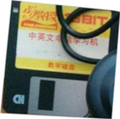Difference between revisions of "Unlicensed Mega Drive clones (Keyboard models)"
From Sega Retro
| (14 intermediate revisions by the same user not shown) | |||
| Line 1: | Line 1: | ||
| − | + | In 1995, the designer of Game Genie, Yi-Rong Chen, got patent for Mega Drive 16-bit computer system, that looked like keyboard.<ref>https://patents.google.com/patent/US5701478A/en?inventor=Yi-Rong+Chen&oq=Yi-Rong+Chen</ref> With help of [[Realtec]], he created EZcom. | |
| − | + | Educational Mega Drive consoles got second life in early 2000s, when bootleg sellers wanted to compete with 8-bit Nintendo educational computers clones. Most of these clones was intended for Chinese, Russian and CIS markets, where Sega was still popular. | |
| − | |||
| − | |||
| − | |||
| − | |||
| − | + | *[[EZcom]] | |
| − | + | *[[CyberShell]] | |
| − | + | *[[CyberSmart]] | |
| + | *[[Magistr 16]] | ||
| + | *[[GS-200]] | ||
| − | == | + | ==New Star FDC-2000== |
| − | + | Chinese clone using both cartridges and floppy disk, released around May 1995 by [[Tianjing Newstar Electronics., Ltd.]] (天津市新星电子) for the price of ¥1800<ref>https://www.163.com/dy/article/GK3F1SSS0526FAFP.html</ref>. The console was unsuccessful because of its high price. | |
<gallery> | <gallery> | ||
| − | + | FDC-2000 MD CN Box Front.png|Box | |
| + | FDC-2000 MD CN Console.png|Console | ||
| + | FDC-2000 MD CN Cart.png|''[[Professor of English]]'' | ||
| + | FDC-2000 MD CN Floppy.png|Floppy disk | ||
| + | Notavailable.svg|Manual | ||
| + | NewStarFDC2000 CN advert.jpeg|Advert (1995) | ||
| + | NewStarFDC2000 CN advert 2.jpg|Advert (1995) | ||
</gallery> | </gallery> | ||
| − | == | + | ==EPC-2001N== |
| − | + | By [[Shenzhen Hot Sun Electronics Co., Ltd.]] | |
<gallery> | <gallery> | ||
| − | + | Notavailable.svg|Console | |
| − | Notavailable.svg|Console | ||
</gallery> | </gallery> | ||
| − | == | + | ==SB-978== |
| − | + | By [[Subor]]. | |
<gallery> | <gallery> | ||
| − | Notavailable.svg|Console | + | Notavailable.svg|Console |
</gallery> | </gallery> | ||
| − | |||
| − | |||
| − | |||
| − | |||
| − | |||
| − | |||
| − | |||
| − | |||
| − | |||
| − | |||
| − | |||
| − | |||
| − | |||
| − | |||
| − | |||
| − | |||
| − | |||
| − | |||
| − | |||
| − | |||
| − | |||
| − | |||
| − | |||
| − | |||
{{MDUnlicensed}} | {{MDUnlicensed}} | ||
Latest revision as of 16:17, 19 October 2024
In 1995, the designer of Game Genie, Yi-Rong Chen, got patent for Mega Drive 16-bit computer system, that looked like keyboard.[1] With help of Realtec, he created EZcom.
Educational Mega Drive consoles got second life in early 2000s, when bootleg sellers wanted to compete with 8-bit Nintendo educational computers clones. Most of these clones was intended for Chinese, Russian and CIS markets, where Sega was still popular.
New Star FDC-2000
Chinese clone using both cartridges and floppy disk, released around May 1995 by Tianjing Newstar Electronics., Ltd. (天津市新星电子) for the price of ¥1800[2]. The console was unsuccessful because of its high price.
EPC-2001N
By Shenzhen Hot Sun Electronics Co., Ltd.
SB-978
By Subor.




